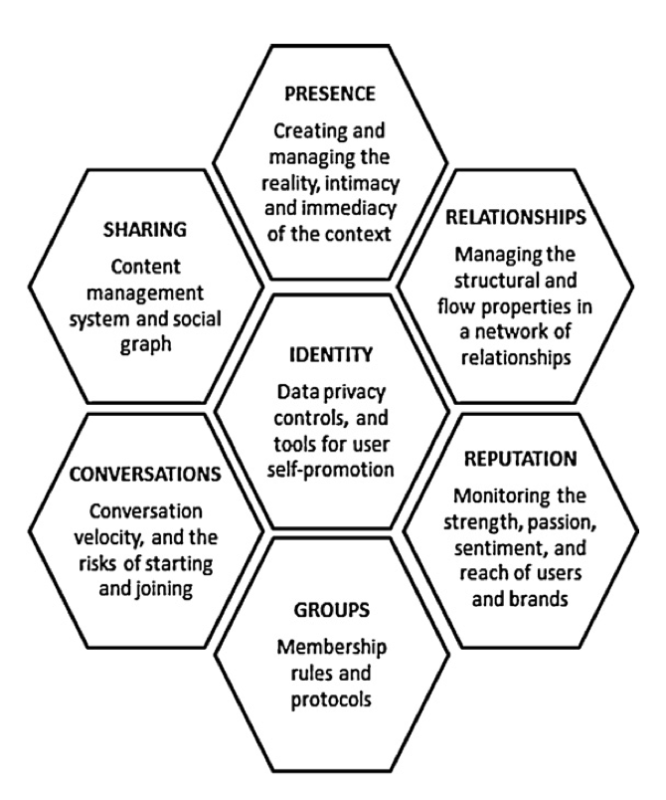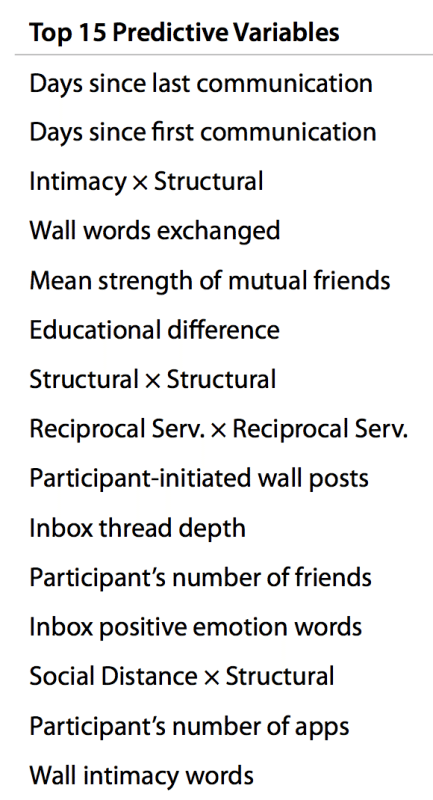
The Science of Building a Strong, Lasting Community on Social Media
Former VP of Marketing @ Buffer
How do your interactions differ between the online world and the offline?
Away from the computer, we may have a better feeling on how to interact with one another and build relationships. Online? It’s a bit of a different world.
As a distributed team at Buffer—meaning we all work from wherever we’re happiest—our interactions together and our relationships with one another take place online. The same goes for many of the connections we make on social media.
So it seems worthwhile to have a better understanding of how these relationships are built and how to create stronger bonds with your social media community.
I ran through the research on the topic and am happy to share what I found about the science of building social media relationships and how it can help bring you closer to your community. Read ahead to see the neat explanations and takeaways on the topic, and do share your thoughts and experience in the comments!

How organizations build community online
Lessons in dialogue, and examples from the American Red Cross
Researchers Michael Kent and Maureen Taylor were the first to come up with the concept of dialogue theory, a method that organizations use to connect with audiences and build relationships online. At the crux of dialog theory is this idea:
Input by and communication to the public
In other words, for companies and brands to build strong relationships online, communication must be a two-way street.
Kent and Taylor, whose research came out in 1998 before the rise of social networks like Facebook and Twitter, found that the basic principles for building this dialogue online are:
- Include useful information on the sites
- Frequently update the sites and generate new content to engage the public and encourage return visits
- Make the sites easy to use and navigate
- Strive to keep the public on the site
What might these dialogue principles look like on the social media profiles we use and manage?
- Share updates that are useful for your community
- Publish updates often—both new content as well as responses to your community
- Make information easy to find for your community—fill out your bio, add links to your website, etc.
- Do your best to keep your community engaged on your profile by responding to comments, holding chats, building groups, etc.
To highlight a use case for dialogue theory, University of Maryland researchers conducted a case study of how the American Red Cross uses social media to engage with its many different audiences. In in-depth interviews with 40 staff members, the researchers found several key insights into the way that the Red Cross builds strong, lasting relationships online.
The American Red Cross’s social media usage exhibited dialogic principles, communality (both parties provide benefits to the other because they are concerned for the other’s welfare) and control mutuality (degree to which parties agree on who has the rightful power to influence one another)
Communality and control mutuality are two of five principles that scholar Kirk Hallahan added to the dialogic concept. Here’s the full list of five, each of which can apply in certain instances to social media community-building.
- Commitment – How the public views a company’s willingness to commit time and resources to building relationships online
- Control mutuality – Two-way interaction and control (the company/brand does not have all the control)
- Communality – Sharing a concern for one another and similar values, beliefs, and interests
- Trust – A company should be seen as believable, competent, reliable, and consistent
- Satisfaction – How a company meets its community’s needs and exceeds expectations
The results of the American Red Cross study highlighted communality and control mutuality specifically as two key principles at play in the Red Cross’s social media strategy. Here’s how the researchers broke down the Red Cross’s strategies and tactics into each of the five Hallahan principles:

(click to enlarge)
Takeaway: To build a strong community on social media, make sure that communication goes both ways. Let your community share ideas and feedback with you, and share useful information with them.
The 7 functional building blocks of social media
The structure and flow of building relationships online
In 2011, researchers Jan Kietzmann, Ian McCarthy, and colleagues created a framework to define the seven most essential parts of social media, synthesizing what they’d learned in an analysis of dozens of other research projects on the subject.
Their conclusion: Social media is made up of seven building blocks.
- Identity
- Sharing
- Conversations
- Groups
- Reputation
- Relationships
- Presence
In their report, the team describes these building blocks as “the honeycomb of social media.”

The honeycomb has some neat implications in many areas, including positivity in social media. For community-building, the honeycomb cell of “relationships” is where the insights can be found for how we build connections online.
One of the key concepts of the study was this:
Existing relationship maintenance versus relationship expansion
Are we using a social network to maintain relationships we already have, or are we using the network to gain new relationships? Or are we doing both?
One of the ways to think about online relationships is a structure and flow concept that the study outlined.
The structural property of a user’s relationships refers to how many connections they have and their position in their network of relationships. Research shows that the denser and larger a user’s portfolio of relationships is, and the more central his or her position in the portfolio, the more likely that user is to be an influential member (‘influencer’) in their network.
The flow property of user relationships refers to the types of resources involved in individual relationships and how these resources are used, exchanged, or transformed.
To paraphrase, when considering online relationships, you can count both the number of friends/fans and your place in the network (structure) as well as what it takes to maintain and build these relationships.
And one final takeaway from the study is the importance of authenticity in building your community.
The general rule is that social media communities which don’t value identity highly, also don’t value relationships highly.
Identity means the ability to share as yourself online and for others to know that it’s you. Twitter and Facebook allow for this with the ability to fill out your profile, send and receive friend requests, and—in the case of Twitter—verify certain popular users as the real person.
Takeaway: In the case of individuals, it may be true that we choose either to maintain our existing relationships on social media or to seek out new relationships. For brands, it’s often both.
Brands have a two-pronged strategy to engage fans and followers with useful content and to bring new relationships in by gaining more followers and fans. One of the ways to go about this is to be as identifiable as possible on social.
Tie strength and social media
The “strength” of an interpersonal tie is a linear combination of the amount of time, the emotional intensity, the intimacy (or mutual confiding), and the reciprocal services which characterize each tie.
This definition of tie strength is a consideration that researchers Eric Gilbert and Karrie Karahalios of the University of Illinois noticed was absent from most social networks’ definitions of friends. On Facebook and Twitter, connecting with a friend or a follower leaves out any context. They are simply a “friend” and a “follower,” regardless of the true depth of the relationship.
When it comes to our offline relationships, there is more nuance. According to tie strength, we have ties that run a spectrum from weak to strong.
Weak ties are loose acquaintances. Strong ties are trusted friends and family.
Online, these lines can become blurred.
Despite many compelling findings along this line of research, social media does not incorporate tie strength or its lessons. Instead, all users are the same: friend or stranger, with little or nothing in between.
Gilbert and Karahalios sought a better way to explain the context of social network friendships, and in their study, they analyzed how tie strength could look in these instances. Participants were asked to answer a series of questions about their connection with a Facebook friend. See below.
How might you answer these questions for a Facebook friend of yours?

1. How strong is your relationship with this person?
barely know them ————- we are very close
2. How would you feel asking this friend to loan you $100 or more?
would never ask ————- very comfortable
3. How helpful would this person be if you were looking for a job?
no help at all ————- very helpful
4. How upset would you be if this person unfriended you?
not upset at all ————- very upset
5. If you left Facebook for another social site, how important would it be to bring this friend along?
would not matter ————- must bring them
One of the most significant signals for a strong or weak tie is question number one. Question number two is the next best indicator of tie strength.
The researchers had hoped to show it was possible for social networks to come up with a way to predict social ties among the friendships of its users. The above questions were one way to go about it, and the study also included data analysis of various elements of the participants’s timelines and Facebook communication. Over 70 variables were considered—things like number of friends, word count of messages, etc.
The most significant, predictive variables were these 15.

How do these questions and variables help you think about your connections with people on Facebook and Twitter and Google+ and LinkedIn? Do the significant factors in strong and weak ties mesh with your experience?
Here’s one last definition from the study that I found helpful:
Strong ties are the people you really trust, people whose social circles tightly overlap with your own. Often, they are also the people most like you. The young, the highly educated and the metropolitan tend to have diverse networks of strong ties.
Weak ties, conversely, are merely acquaintances. Weak ties often provide access to novel information, information not circulating in the closely knit network of strong ties.
Takeaway: Understand the value in having both strong ties and weak ties in your community. Strong ties are those long-lasting community members who contribute often and help spread the word about your brand. Weak ties may require less relationship maintenance and can help you expand your horizons and discover new information.
3 etiquette rules to build relationships online
When developers and designers build interactive characters to help guide users through apps and games and services, there’s a strong sense of behavioral psychology that goes into many successful designs. The digital people are made to act and respond in a similar fashion to the way people would in the real world.
Authors Byron Reeves and Clifford Nass discuss some of these considerations in their book The Media Equation. And their insight into etiquette rules is useful not just for designers but also for all of us who are seeking to build connections and community online.
Here are three of their etiquette rules that transfer from the real world to the digital world.
1. Say hello and good-bye. When interacting on social media—via chats or conversations or messages—start with a hello and end with a good-bye. These do not need to be literal hellos and good-byes, either. On Twitter, a good-bye could be something as simple as favoriting a tweet to end a conversation.
2. Look at someone when they’re talking to you. The sentiment here is to give someone your full attention. This means engaging fully in conversations on social media and taking the time to listen (tracking your brand’s name or hashtags is a great option) and respond thoughtfully (sometimes these responses are best left to manual response and not automation).
3. Answer a letter with a letter. Called matched modality, this type of politeness asks someone to respond the same way that another reached out. For instance, if someone sends you a direct message on Twitter, it’s best to respond with a direct message and not a public @-reply. This etiquette rule can extend to customer support as well; if a customer reaches out to you on Twitter, it’s best to continue the conversation there and not to move things to email or phone.
Find your brand’s voice and follow it
Many of the studies mentioned above has touched on authenticity and reciprocity with the way one shares on social media. A lot of this comes back to the voice and tone of your brand.
What guides the way you communicate with your community?
There’s great benefit in deciding on a consistent voice and tone for the way your brand shares on social media. Deborah Sweeney, writing at Social Media Today, has a great sense of how this can work for companies and brands.
It can be hard for a business to cultivate its voice. After all, your company isn’t a celebrity, or any sort of personality. You can’t post pictures of it hanging out with friends on the weekend. But your brand does have a voice. And it is that voice that sets you apart from your competitors. People will follow you through your various social channels because they like that voice. So you need to work to cultivate it, and keep your presence authentic.
Good content, quick responses, and an actual person to monitor and interact through your feeds will do wonders for your social marketing campaign.
Is this something you’ve found to be true for your brand?
Summary
How do you go about building community on social media? Do you consider the science behind the relationships you make?
The studies that have covered the topic of social media community and relationship seem to have a common thread.
- Make sure that communication goes both ways.
- Be authentic with your voice and tone in order to engender trust.
- Seek out close connections and acquaintances. There are benefits to having both in a community.
What have you learned from the research into social media communities? I’d love to hear your thoughts in the comments!
Image sources: The Noun Project, Blurgrounds, Death to the Stock Photo
Try Buffer for free
140,000+ small businesses like yours use Buffer to build their brand on social media every month
Get started nowRelated Articles

TikTok's parent company must divest the app or face a ban in the U.S. Here's everything we know, plus how to plan ahead.

Whether you’re a full-time content creator, micro-influencer, nano-influencer, or just getting started, here’s how to create your own influencer media kit.

In this article, get answers to questions about social media for solopreneurs.